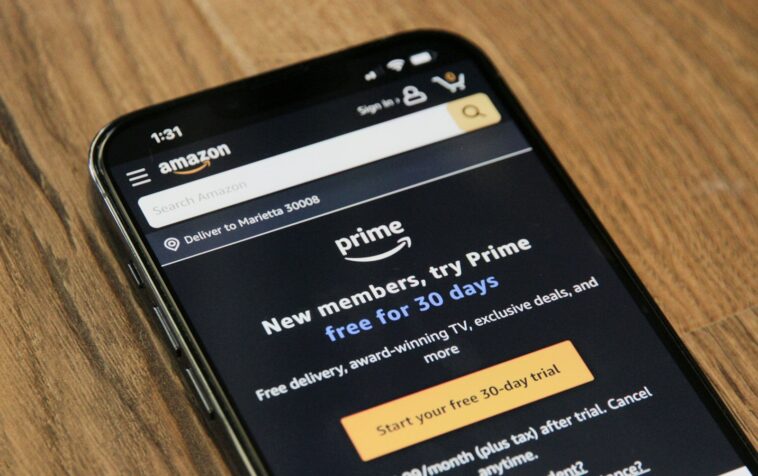Introduction.
Selling digital products is one of the easiest ways to start making money online. You don’t need to worry about shipping, packaging, or inventory.
Once the product is created, you can sell it again and again — 24/7 — without lifting a finger. But where do you actually sell them? One platform that often gets overlooked is Amazon.
Yes, Amazon isn’t just for physical stuff like books, gadgets, and home goods. You can actually sell digital products there, too. I know — it sounds a little unexpected.
But if you get it right, Amazon can open the door to thousands of potential customers who are already searching for things like ebooks, software, printable planners, music, design templates, and more.
That’s what I’m going to walk you through today — exactly how to list your digital products on Amazon, step by step, with no fluff. I’ll also clear up what’s allowed, what’s not, and how to set yourself up for success. Let’s get into it.
First, What Counts as a Digital Product?
Before jumping into the setup, you need to be super clear on what Amazon does and doesn’t allow when it comes to digital products.
Allowed on Amazon:
eBooks (through Kindle Direct Publishing)
Audiobooks (via Audible or ACX)
Music (Amazon Music for Artists)
Apps and games (for Amazon Appstore)
Software and video content (limited categories)
Not allowed (directly):
Printable planners
Downloadable PDFs
Canva templates
Digital art prints
That doesn’t mean you can’t sell those — it just means Amazon doesn’t allow you to directly upload and deliver them the way you might on Etsy or Gumroad. But don’t worry — I’ll show you how to work around that in a legit way.
Option 1: Sell eBooks Through Kindle Direct Publishing (KDP)
This is the most straightforward option. If your digital product can be packaged as a book, KDP is your best friend.
Examples:
How-to guides
Journals and workbooks
Recipe books
Low-content books (like planners or trackers)
Steps:
Go to kdp.amazon.com and sign in with your Amazon account.
Click “Create” and choose “Kindle eBook” or “Paperback” (you can do both).
Add your book title, description, and keywords.
Upload your manuscript (usually a PDF or Word doc).
Upload your cover (you can design one using free tools like Canva).
Set your price and choose your royalty option.
Once it’s live, people can buy your book on Amazon. You’ll earn up to 70% royalties depending on your price and format.
Option 2: Sell Digital Audio Through ACX or Amazon Music
If your digital product is an audiobook or music file, Amazon has options for that too.
For audiobooks: Use ACX.com
ACX connects you to Audible, Amazon, and iTunes.
You can narrate your book or hire a narrator from the platform.
You earn 40%–50% royalties depending on exclusivity.
For music: Use Amazon Music for Artists
You’ll usually go through a distributor like DistroKid or TuneCore.
Upload your music and distribute to Amazon (along with Spotify, Apple Music, etc.).
Earnings depend on streams and purchases.
Option 3: Sell Printable or Downloadable Products Through a Physical Product Hack
Now this is the part most people don’t know about.
Amazon doesn’t let you upload a PDF download directly. But you can sell a physical version of your digital product and include a download link inside.
Here’s how:
Create your digital product — let’s say it’s a printable planner or a Canva template.
Create a physical version — print it or turn it into a booklet with a cover (you can do this on Amazon KDP as a “low-content book”).
Include a link to the digital file inside the book (hosted on Dropbox, Google Drive, or your website).
Sell it as a physical book — and buyers will receive the digital bonus when they get the product.
This is super common in the journaling and planner niche. You’re technically selling a physical product but giving buyers access to more content digitally.
Pro tip: Make sure your download link isn’t time-sensitive or password-protected — Amazon reviews your content and they may reject your listing if it’s confusing or broken.
Option 4: Sell Software, Courses, or Subscriptions
If you sell a digital product like an app, software tool, or even a subscription, Amazon has a few more options, but they’re mostly for more established sellers.
Options include:
Amazon Appstore (for mobile apps and games)
Amazon Video Direct (for videos)
Amazon Web Services Marketplace (for SaaS tools)
These routes take more setup, and you’ll usually need a developer account or go through an approval process. But for tools like Chrome extensions or mobile apps, this is the way in.
Best Practices for Listing Digital Products on Amazon
No matter which method you choose, these tips will help:
Use strong keywords in your title and description
Include high-quality images (even for digital products — mockups help)
Write a clear description explaining exactly what the customer is getting
Check Amazon’s content guidelines to make sure you’re not breaking any rules
Add value with bonuses like extra templates, downloads, or access to private content
FAQs
Can I sell a PDF download on Amazon?
Not directly. Amazon doesn’t allow customers to download PDFs like Etsy does. But you can include a download link in a physical book or product.
Do I need a seller account to list digital products?
If you’re using KDP or ACX, you don’t need a seller account — just a regular Amazon login. But for physical products, you’ll need a Professional Seller account, which costs $39.99/month.
How much money can I make?
It depends on your product, niche, and how well you market it. Some eBook creators earn just a few dollars a month, while others make thousands.
As of 2023, the average self-published author earns $1,000–$5,000 a year from eBooks, but top sellers earn much more. (source)
Is Amazon better than Etsy for digital products?
Each platform has pros and cons. Amazon has more traffic, but Etsy allows direct downloads and is better for visual products like templates and art. Many sellers use both.
Final Thoughts
Amazon might not be the first place that comes to mind when you think of selling digital products, but once you understand the rules, it can become a surprisingly powerful platform.
From eBooks to music to creative workarounds for downloads, there are real opportunities to reach a massive audience.
So — you’ve got the knowledge, you’ve got the product — are you ready to start listing your digital products on Amazon?
Let me know if you have any questions or if you want help brainstorming the best format for your product.





GIPHY App Key not set. Please check settings